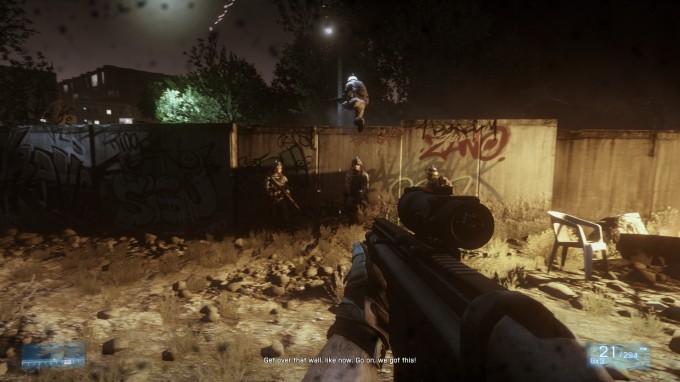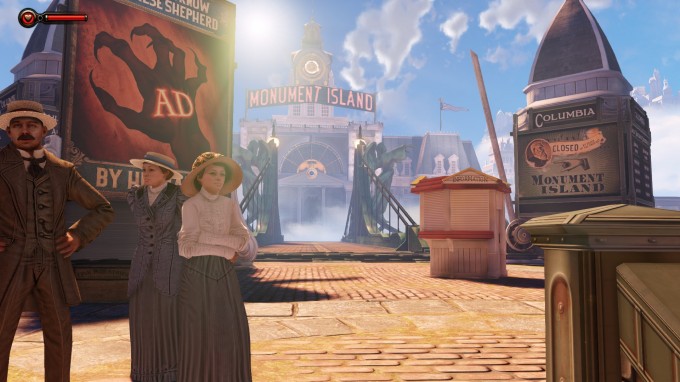- Qualcomm Launches Snapdragon 4 Gen 2 Mobile Platform
- AMD Launches Ryzen PRO 7000 Series Mobile & Desktop Platform
- Intel Launches Sleek Single-Slot Arc Pro A60 Workstation Graphics Card
- NVIDIA Announces Latest Ada Lovelace Additions: GeForce RTX 4060 Ti & RTX 4060
- Maxon Redshift With AMD Radeon GPU Rendering Support Now Available
AMD Radeon R9 270X Graphics Card Review

We took AMD’s $300 Radeon R9 280X for a spin last week and were left quite impressed overall with the results, versus the GTX 760. Will we get the same sort of reaction with the company’s Radeon R9 270X? With the help of NVIDIA’s ~$175 GeForce GTX 660, we’re going to find that out.
Page 3 – Game Tests: Battlefield 3, BioShock Infinite
Battlefield 4‘s launch is right around the corner, but despite there being a beta available, I’m sticking to Battlefield 3 for the sake of reliable benchmarking until the dust settles. Even though BF3 was released in 2011, it remains gorgeous at maxed-out detail settings, and a good challenge for today’s GPUs – though the real challenge begins above 1080p for mainstream and higher parts.
Manual Run-through: Operation Guillotine (chapter 5) is the basis for my benchmarking here, as it features a lot of smoke, water, debris and is reliable for repeated benchmarking. The level starts us out at the top of a hill, and after descending it, we go over a fence and through a riverbed. I stop the play-through after reaching the first set of stairs.
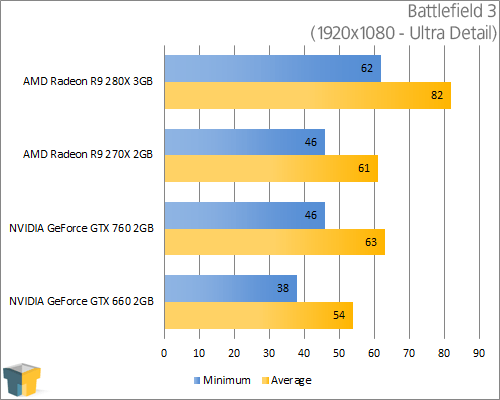
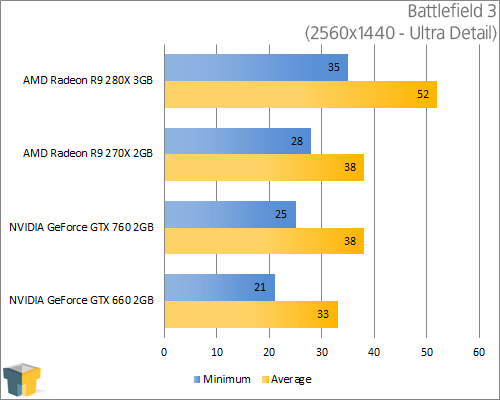

Remember when 1080p felt like the definitive resolution to stress a GPU? Given the results here, that’s no longer the case: 54 FPS on average on the $150 GTX 660 with a gorgeous game like Battlefield 3… not too shabby. Given what we saw last week in the matchup between AMD’s R9 280X and NVIDIA’s GTX 760, and now these results, I have a gut feeling we’ll be seeing the R9 270X perform quite nicely against the GTX 660. Heck – it managed to match the $250 GTX 760 in our 4800×900 multi-monitor test.
BioShock Infinite
Sometimes, the hype that follows a game to its launch can be a little ridiculous, and all too often, it doesn’t live up. BioShock Infinite (our review), though, is one of those rare instances where reality exceeded expectations. Infinite‘s world is immersive and chock-full of eye-candy, and its gameplay mechanics and AI help craft something truly special. This is a must-play game, it’s that simple.
Built-in benchmark: Finding a “perfect” level for manual benchmarking proved difficult with this game, as numerous variables arose in each one I tested that made them less-than-ideal. Fortunately, the game’s built-in benchmark is effective, so while I hate to forego the manual route, I feel confident in the results generated with this tool.
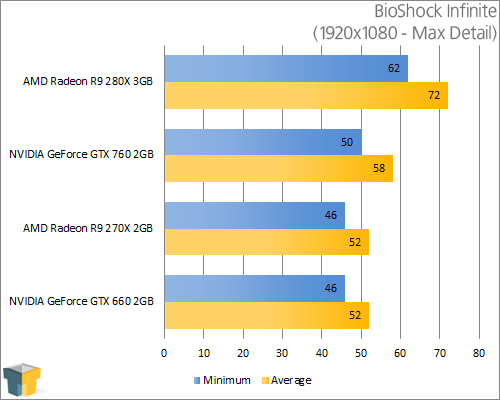
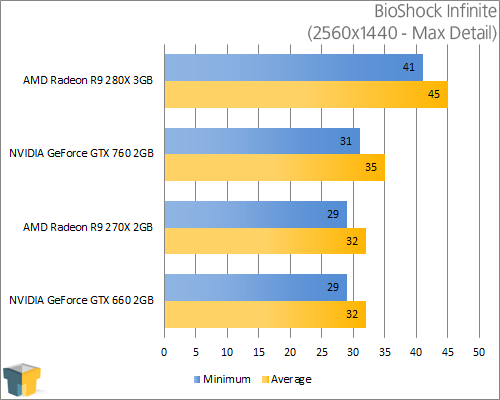
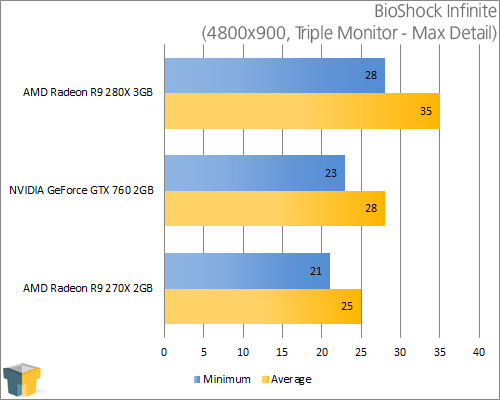
No – that’s not a typo in our 1080p or 1440p results – both the R9 270X and GTX 660 came out exact. If our NVIDIA card didn’t have some bizarre issue that made multi-monitor resolutions impossible, we might have seen the same thing with our 4800×900 test. I think it’s safe to say that for the best bang-for-the-buck, NVIDIA wins this round.
Support our efforts! With ad revenue at an all-time low for written websites, we're relying more than ever on reader support to help us continue putting so much effort into this type of content. You can support us by becoming a Patron, or by using our Amazon shopping affiliate links listed through our articles. Thanks for your support!




